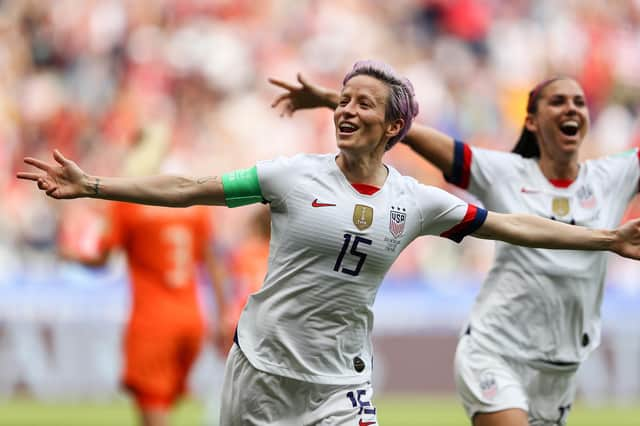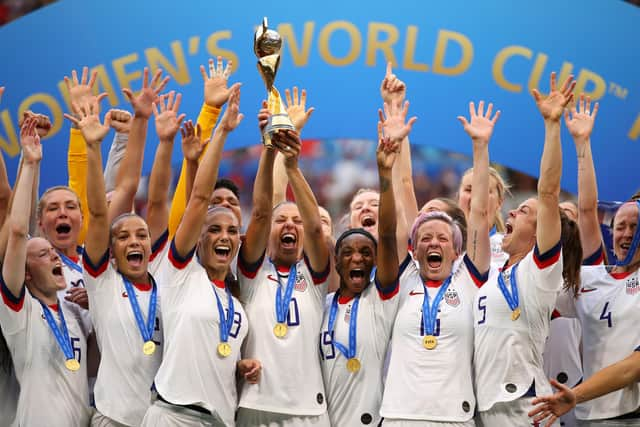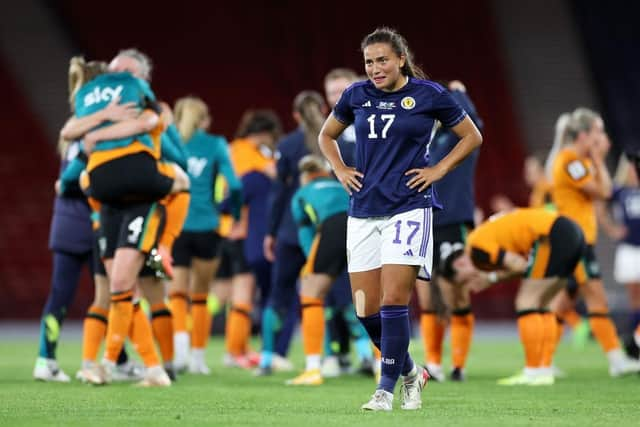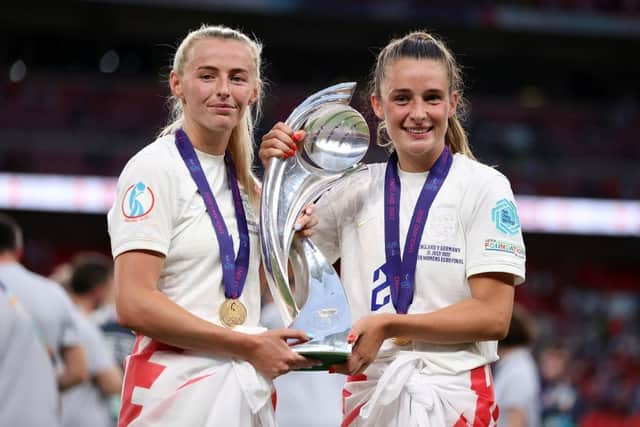Women's World Cup 2023: Megan Rapinoe swansong as USA bid for historic treble, England's chances, Scottish envy


The reason? A goal shown from the SWPL as the ball crashed over the head of an opposition goalkeeper invited an inaudible aside and a brief giggle. As much as the women’s game has moved forward, cultural perceptions remain a job in hand.
By the end of the next month, there might not be quite so much to laugh about following a FIFA Women’s World Cup that, commercially, is set to be the most glamorous spectacle in women’s football to date.
Advertisement
Hide AdAdvertisement
Hide AdNot that it has necessarily been an easy sell. It took until five weeks before the tournament opened for a nine-month stand-off between FIFA and European broadcasters to conclude. The governing body had bristled at the low-ball bids for coverage; the opening offer from Italy was £283,000 (300,000 euros) compared to the 160m euros for the rights to Qatar. In the UK, the joint bid from ITV and BBC was believed to be around 9m euros - 8 per cent of what was paid for coverage of the men’s tournament.


Still, with a revamped tournament that boasts a 32-team format, the deal ensures that for the next month the Women’s World Cup will provide a window into events in Australia and New Zealand as the FIFA Women’s World Cup looks to capitalise on no other competing football across the next month.
The prize money on offer has been ramped up significantly, albeit that it still looks like pennies when compared to the eye-watering numbers of its male equivalent. The prize pot this summer sits at $110m - £88.4m - with each player in the winning team walking away with $270k. Group participation is worth $30k per player, progression beyond that initial stage worth $60k. Given the modest salaries that exist in the women’s game - an average in the SWPL would be less than group stage participation at the Women’s World Cup - these figures are notable.
FIFA have insisted that their objective is to have financial parity by 2027 but has put the onus on achieving that essentially to broadcasters and sponsors, although FIFA has established a dedicated marketing concept for the women’s game.
Financial arguments have underpinned much of the build-up to the tournament. Canada, the reigning Olympic champions, were in dispute with the CSA for much of the build-up to Australia and New Zealand. T-shirt protests with “Enough is enough” printed on them and planned strikes resulted in a deal which reflected the men’s game-by-game incentives and results based financial compensation.


For many, it will be a relief to get down to the business of playing football. Canada boast one of the legends of the women’s game in Christine Sinclair. Her current tally of 190 goals makes her the highest scoring player in international football – Cristiano Ronaldo’s tally of 122 has him lagging behind.
The States, of course, dominate this arena. Megan Rapinoe may not carry universal appeal – and there is an interesting aside for another day as to how outspoken sportswomen tend to be perceived – but there is no question that the 2019 World Cup made the USA internationalist a global household name. America’s success in France as they lifted the World Cup trophy gave Rapinoe a glorious stage in which to publicly rebuff then President Donald Trump; ‘I’m not going to the f***ing White House’, a comment that was celebrated or scorned depending on political sway in her homeland. 2023 will be her final bow. This will be her last major tournament with retirement following at the end of the US domestic season. It’s unlikely that she will go quietly.
Similarly, it remains to be seen if it is America under the new direction of Vlatko Andoovski who make the most noise across the coming month. Back-to-back world champions, the US are the favourites to make it a triple success and keep hold of the trophy as their own. The States have been a perennial force on the landscape of women’s international football since the first recognised FIFA Women’s World Cup in 1991; the four times World Cup champions are one of only seven countries to have competed at all nine tournaments. They have never failed to reach the semi-final stage. If they realise their ambitions of a third successive world title they would be the first team to do so.
Advertisement
Hide AdAdvertisement
Hide AdGermany, with back-to-back titles in 2003 and 2007 are the only other team to have won multiple World Cups on the women’s stage. They reached the finals of the European Championships last summer only to lose a pulsating final to England. Their results going into the tournament do not suggest the form of champions yet they tend to find a way to produce when the pressure is on.


England, too, will quietly fancy their chances. The Lionesses are compromised without the injured Beth Mead and Leah Williamson but will be keen to showcase how far they have come in recent years. Brazil have a fairytale of their own with 37-year-old Marta, playing at her sixth and final World Cup, hoping to finally lead her country to the trophy.
Scotland will look on enviously as Republic of Ireland take their place on the opening day, the first time the Irish have been on the World Cup stage. Their golden ticket came at Scotland’s expense with the next four weeks offering ample scope for Pedro Martinez Losa’s side to wonder just what might have been.
Comments
Want to join the conversation? Please or to comment on this article.